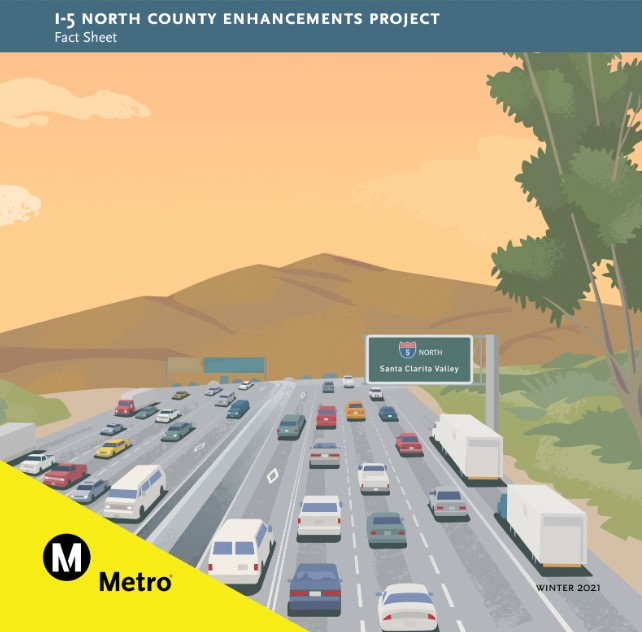Below is a round-up of several recent freeway stories that didn't quite rise to the level of their own post.
Latest on Metro's 710 Widening Task Force
Yesterday, Metro hosted the fourth meeting of its recently-formed 710 Freeway widening task force. As SBLA noted before, the task force sure feels like a Metro tactic to waste the community’s time while running out the clock in hopes that the current heat on the project dies down. (After decades of community resistance, the $6 billion 710 widening project was, in 2020-21, canceled by the EPA, paused by Caltrans, and suspended by the Metro board.)
Much of the task force meeting was about setting up more and more meetings, trying to get community members to commit to spending time on vaguely defined committees.
The meeting did feature highlights from a 30-minute Metro video purporting to outline the baseline conditions of the 710 Freeway corridor.
The video shows Metro biases toward highway widening.
The transit and bike portions of Metro's 710 baseline video are factually wrong.
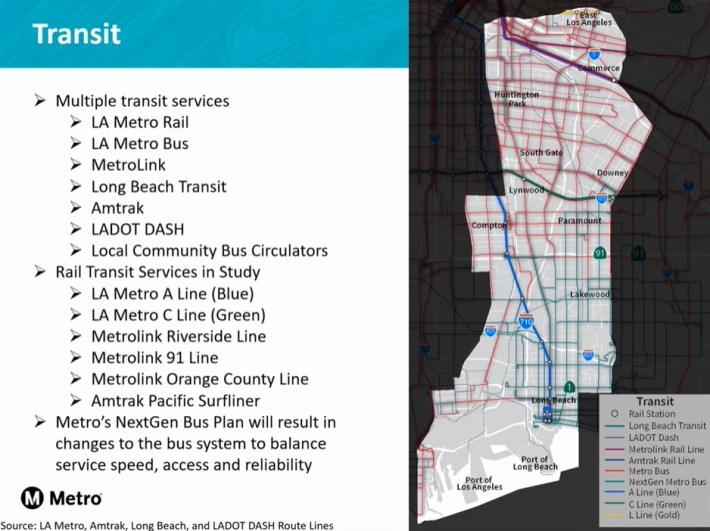
Metro's video incorrectly states that "Metro's NextGen Bus Plan will result in changes..." though the agency already implemented the third of three planned sets of NextGen Bus Study changes in December 2021. The presentation further focuses on declining Metro ridership.
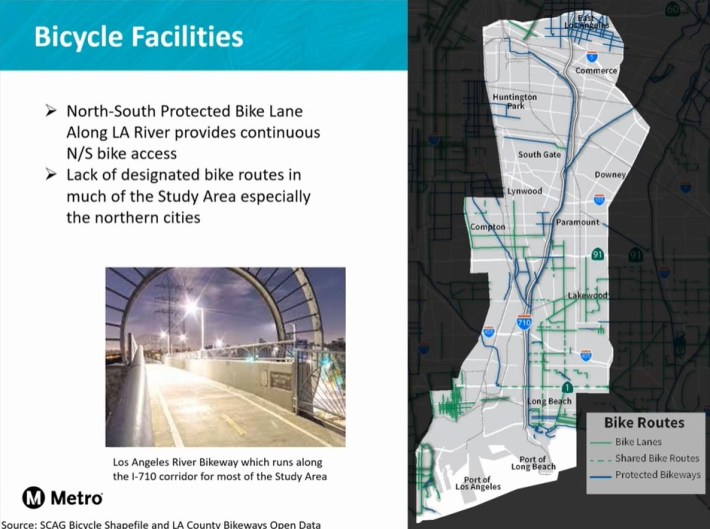
Metro's video states that there is a "protected bike lane" along the L.A. River, when the river facility is actually a bike path. The presentation emphasizes that there is "a lack of designated bike routes," though cyclists know that bike routes are typically meaningless. Metro's "Bike Routes [sic]" map labels many bike paths as protected bikeways, and maps numerous protected bikeways in lots of places where they don't exist: East L.A., Vernon, Carson, etc. (Hint for Metro's intern: the only protected bikeways in the study area are in the city of Long Beach.)
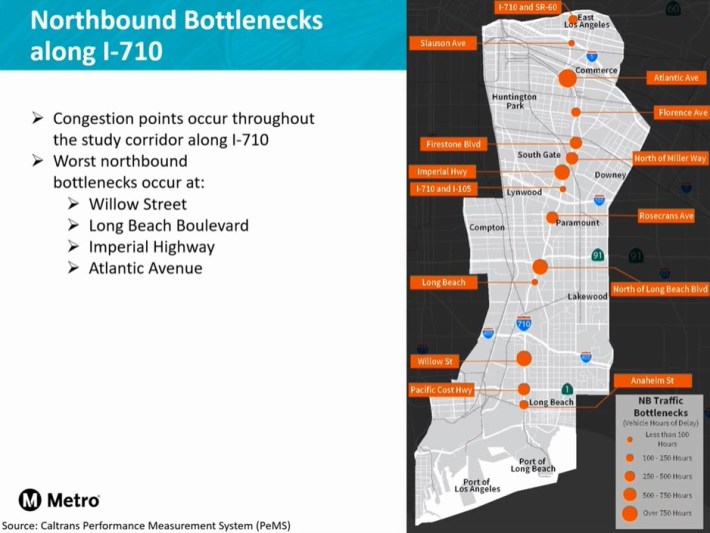
Much of the Metro presentation focuses on making a case for widening the 710. Metro's presentation compares 710 car volumes to suburban Orange County freeways. It details car congestion, delays, speeds below 45 or 35 mph, "bottlenecks," etc. Metro's narrator identifies himself as a driver speaking to an audience of drivers stating "as we know driving the freeway during the peak hours... often that is down to a crawl where you come to a stop in many locations" [minute 14:15.]

The presentation does include useful information on the demographics of the corridor - and the pollution burden borne by people there. It is low-income, predominantly Latino and Black. The air there is heavily polluted with diesel particulate matter and several other pollutants.
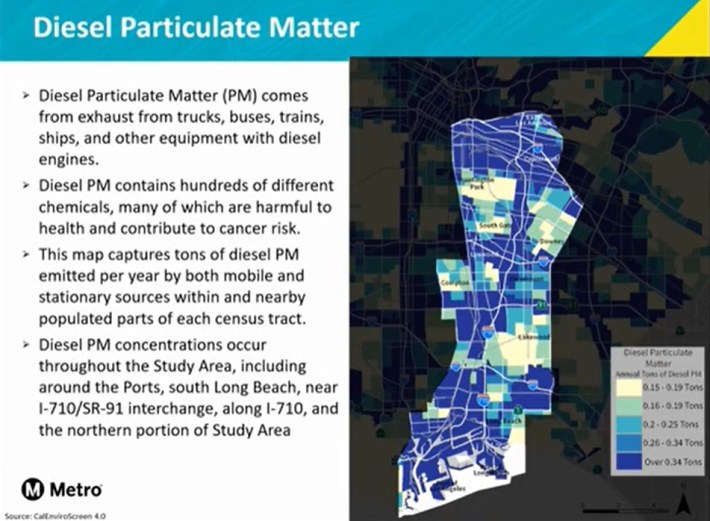
Starting with this sort of car-centric "baseline" can Metro be trusted to come up with a truly "multi-modal investment strategy" for the corridor? Or will they just want to add more and more and more freeway lanes?
Metro's 710 Aesthetic Master Plan
It isn't really news, but Streetsblog recently came across the I-710 Corridor Aesthetic Master Plan developed by Metro, Caltrans, and the Gateway Cities Council of Governments. The Metro website has a 62-page slideshow about the plan, apparently developed about five years ago.
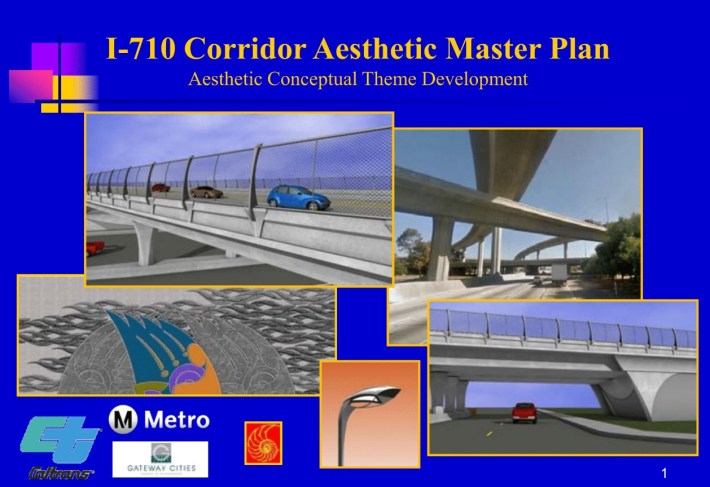
Freeways and aesthetics don't mix all that well... and the slide show might make you laugh or cry.
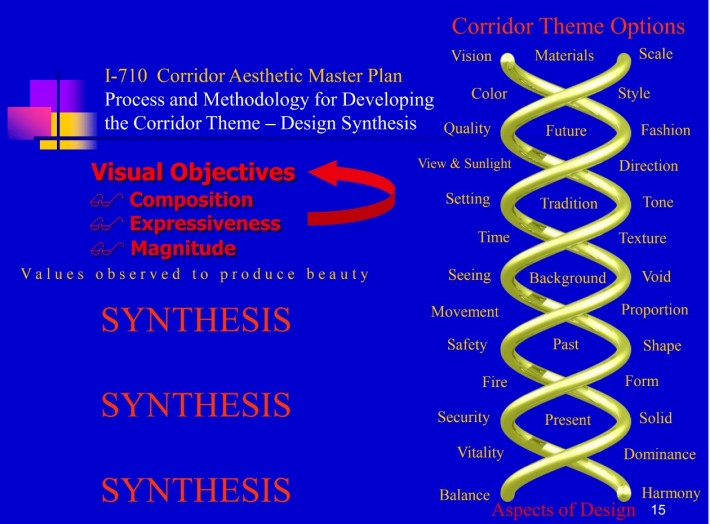
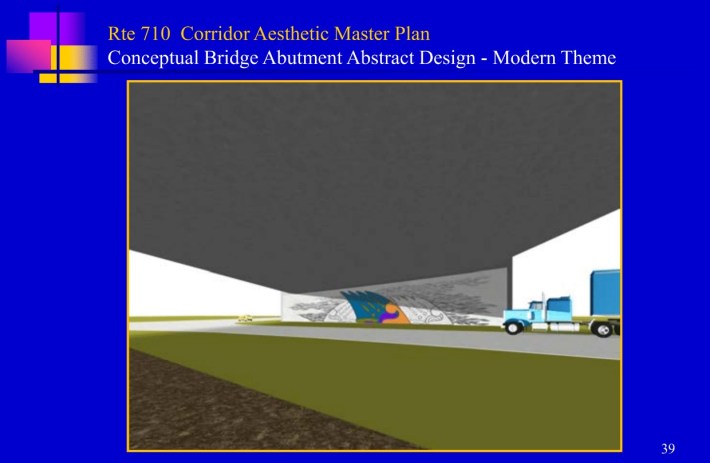
See SBLA's Twitter thread for a few more selected lowlights.
71 and 5 Freeway Widening Hitting Snags
According to a December Measure M Oversight Committee report, Metro and Caltrans are continuing to hit snags on freeway widening projects currently under construction.
Metro and Caltrans broke ground in June 2021 on the first of a two-phase widening of the 71 Freeway through Pomona. The initial 2-mile $174 million phase quickly fell behind schedule due to unanticipated overhead power line conflicts.
As of the December report, Metro noted that on the 71 widening the "Power lines are in conflict with construction staging" and a new issue has arisen: "Arsenic soil found on site, which needs to be properly disposed of before construction work can resume."
The report also notes a few unanticipated issues on Metro and Caltrans' widening of the 5 Freeway through Santa Clarita. That 13-mile $679 million widening project broke ground in December 2021. The same day as the groundbreaking, Metro reported that it was "Encountering unexpected utilities and buried man-made objects, responding to special-status species in the project area, changes in design during construction, and differing site conditions."
That unidentified "special-status species" may be the unarmored three-spined stickleback, a one- to three-inch long fish, an endangered species that inhabits tributaries of the Santa Clara River.
The report did not include any cost overrun or schedule delay specifics from these snags.
Bakersfield Demolishes Neighborhoods For New Freeway
Just in case readers think that destructive freeway construction is a southern California thing, Streets for All's Josh Vredevoogd recently shared a current aerial view of Bakersfield showing a swath of destruction to make way for the Centennial Corridor freeway project.
new stretch of freeway being born in bakersfield pic.twitter.com/xs1uVqmtuh
— josh vredevrooooom (@jawshv) January 3, 2022
According to L.A. Times reporter Liam Dillon, the Centennial Corridor project demolished 271 homes in majority Black/Latino neighborhoods.
This new freeway project in Bakersfield took 271 homes in majority Black/Latino neighborhoods. https://t.co/KsWaFCCTcI
— Liam Dillon (@dillonliam) January 5, 2022
A lot like Caltrans/Metro 5 Freeway widening websites, the city of Bakersfield project webpage proudly displays high production value aerial photos of the demolished neighborhood.
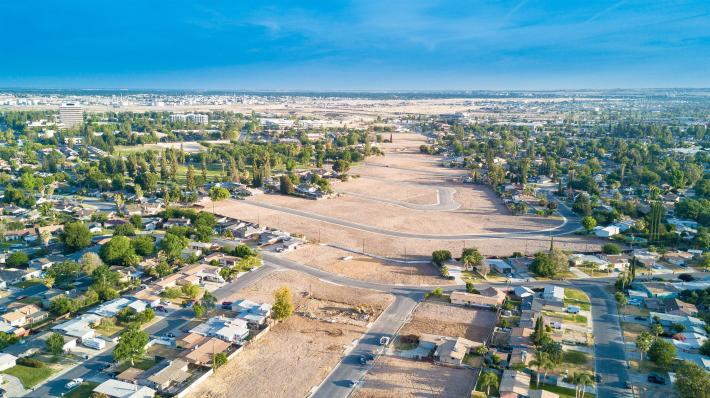
This 2019 KGET coverage states that this "final" 2-mile phase of freeway expansion is costing $147 million, and is expected to open in 2023.
